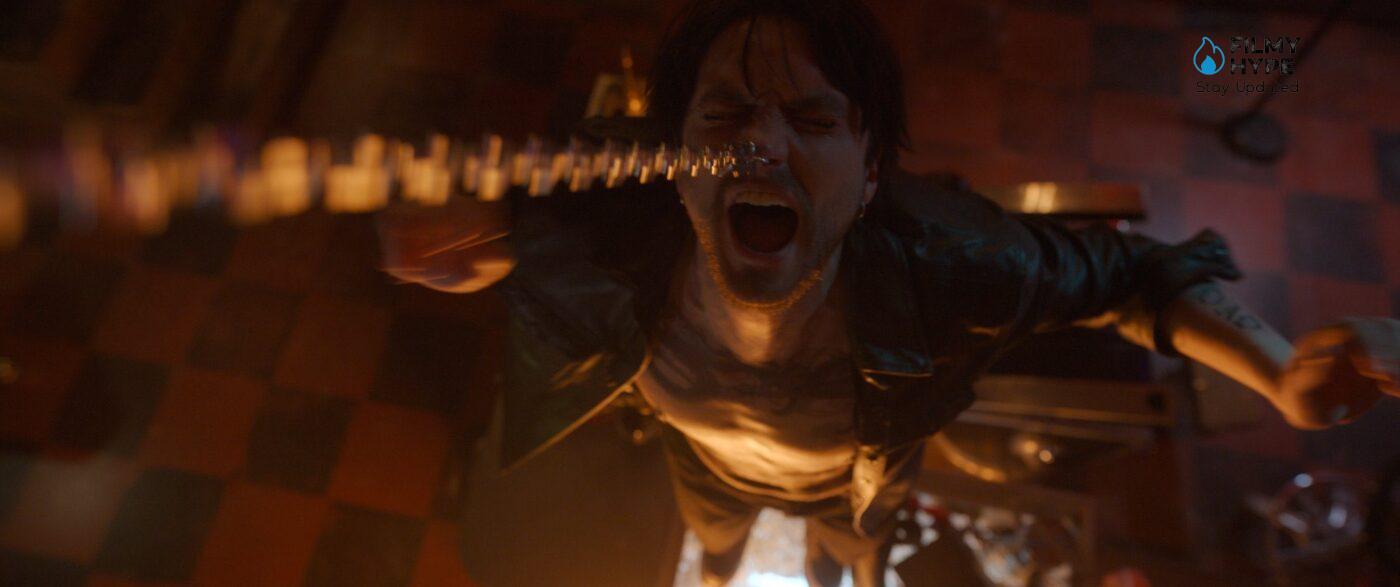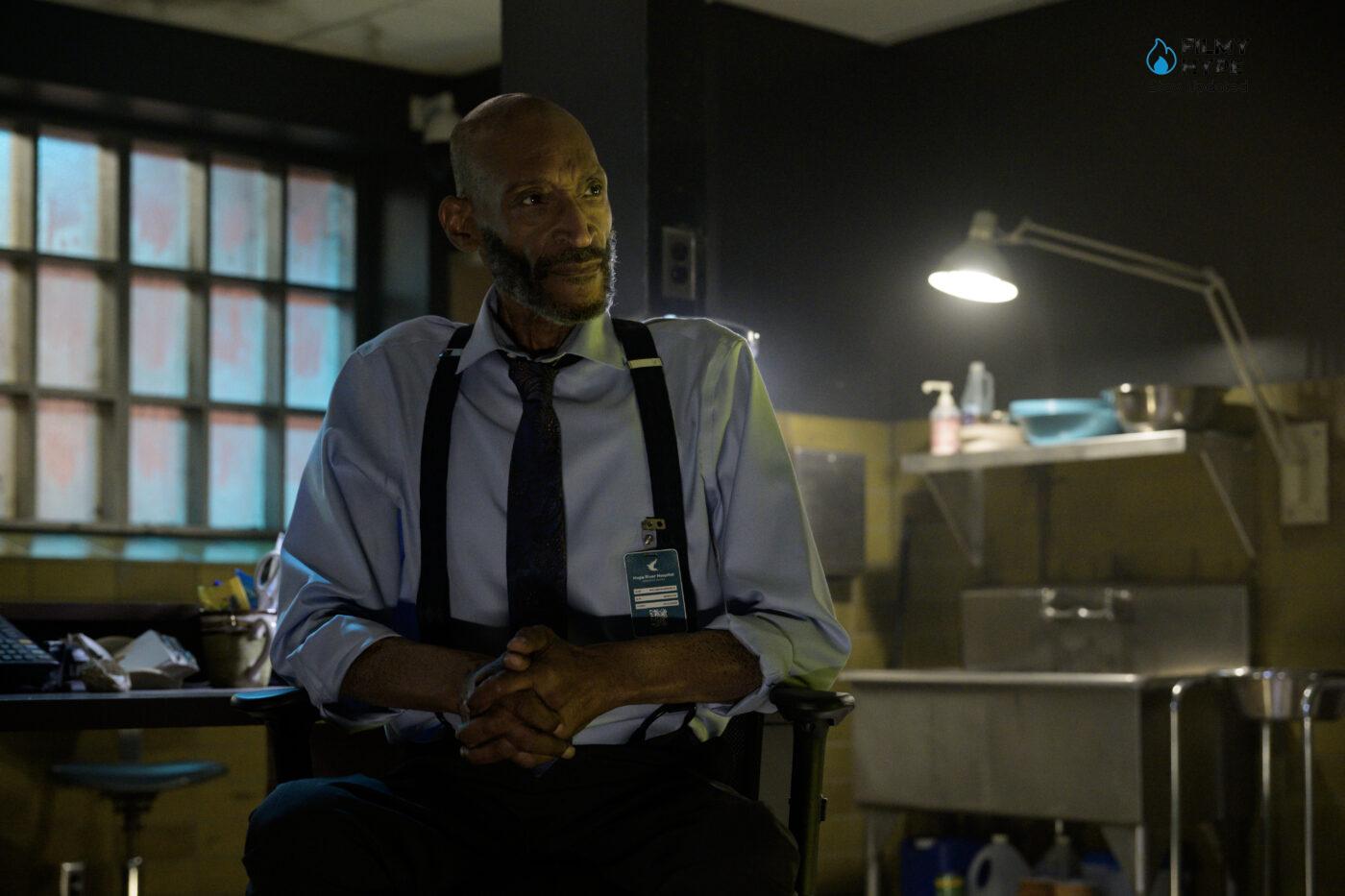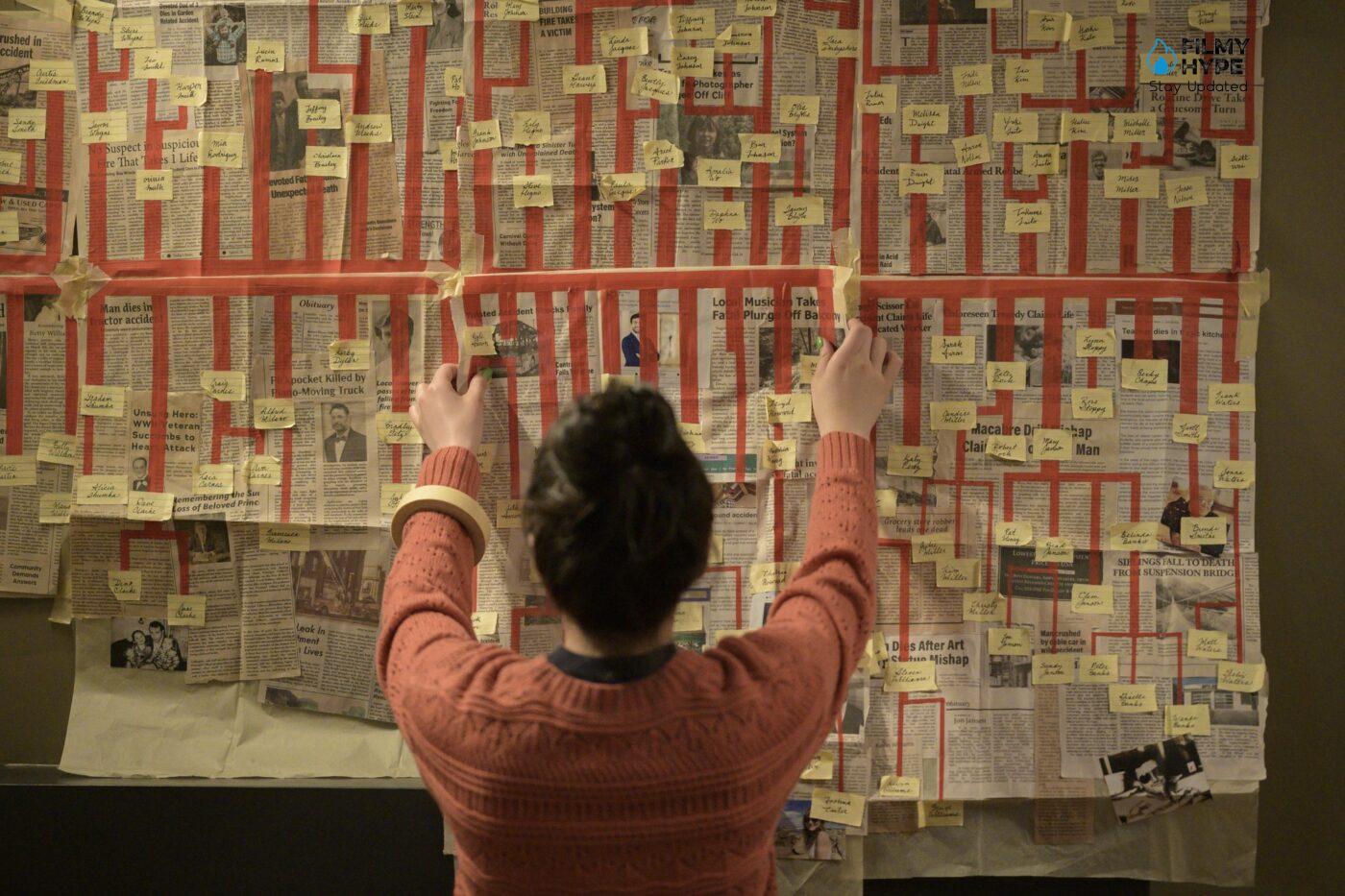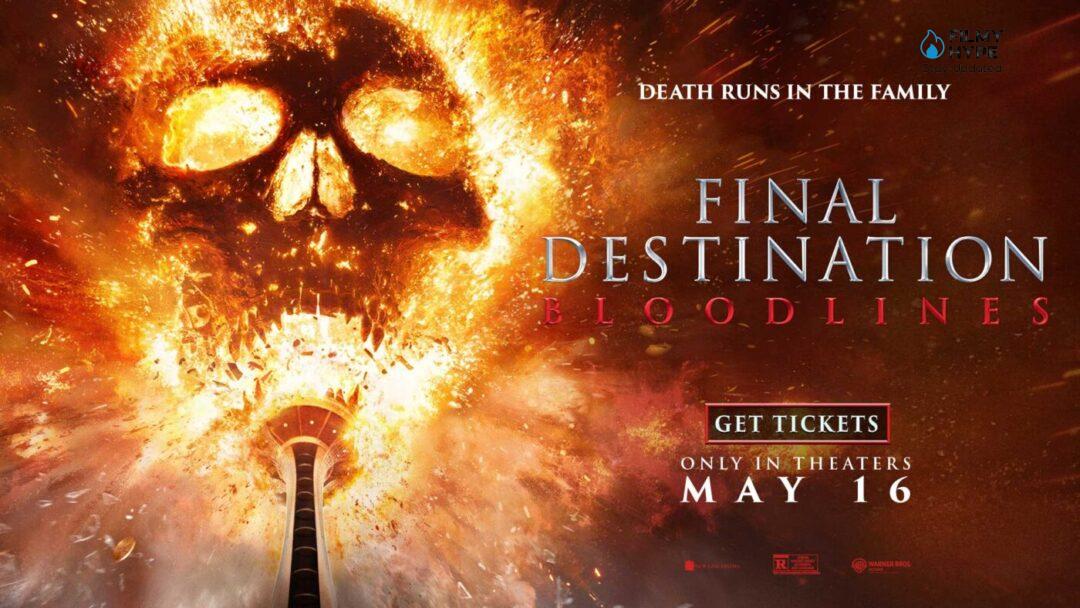Final Destination Bloodlines Review: The Premise Further Opens the World of the Saga!
Legend has it that the two directors of Final Destination Bloodlines were chosen from a hundred candidates tried by Warner Bros to revive a franchise that has remained dormant for over a decade, despite the creative crisis in which Hollywood is immersed. Adam B. Stein and Zach Lipovsky would have been directed by the sixth film of the saga, preparing a complex coup d’état with which to close the video call during which they had submitted their idea to the studio’s managers. By mixing pre-recorded sequences and using special effects, they have staged a sort of accident at the Final Destination at the end of the call, staging their death. In this anecdote, there is little that needs to be said about this film and the franchise that dusts off. Like many other predecessors and competitors – I think for example, of Scream – in recent years, we are witnessing the difference between those who first had the vision, the basic idea ingenious in its simplicity and effectiveness, and who with that vision, grew up, loving it and becoming a fan of it. It is a slip that is not so relevant, but that still makes itself felt and tells us many things: for example, how today we look not so much for those who have ideas that can fascinate the public, but rather for those who can stimulate its nostalgia for the cinematographic past in the right way.

One must never play with death, because this has a macabre and sadistic irony that does not stop in front of anything or anyone. The protagonists of the Final Destination franchise know something about it, which arrives again on the big screen starting from May 15, 2025. After a fifth chapter that returned to the origins of the saga, Final Destination Bloodlines tries to rework the narrative structure that fans know very well, moving the story on new characters and situations halfway between the past and the present. The premises of Final Destination Bloodlines certainly attracted the attention of fans in the advertising and sponsorship phase. Directed by Zach Lipovsky and Adam Stein, and written by Guy Busick and Lori Evans Taylor, this sixth feature film seems to promise the typical and bloody fun that has always characterized the style of these films but … in addition to the creative and unexpected deaths, will there be more to see and be passionate about?
Final Destination Bloodlines Review: The Story Plot
1968: Iris Campbell, a young pregnant woman, is a guest, together with her partner, of the inauguration of a new, luxurious restaurant located on top of a tower. However, she perceives that something is wrong and warns everyone present about the need to leave the building. Five decades later, a student is tormented by a nightmare that proposes the scene just described, but with everyone dying. Well, she is Iris’ granddaughter, and that nightmare is the vision that prompted her to save everyone years ago. As usual, the Death he has not digested it, and is on the hunt for the last survivors. Because in this case the list is a little ’ different: every time he takes out one of the original survivors, in the order in which the person had to die in the disaster of ’68, before moving on to the next one he takes it with any children and grandchildren of the deceased, since it is an entire offspring that should not have existed (a topic already partially addressed in the second film). The classic race against time begins, looking for any way to ward off a crime that is always around the corner…
Final Destination Bloodlines marks the return of a franchise that knew how to define horror through a constant, inevitable threat: Death itself, which became a constant and iconic character of a precise and practically indelible narrative modality. In this new chapter, signed New Line Cinema, the specter of destiny is intertwined with family roots, proposing a dark and disturbing investigation of the lethal design that has held millions of spectators with bated breath for years. Here, the tension becomes wider in Lipovsky and Stein’s feature film, linking a series of varied and historical circumstances between past, present, and denied future. The protagonist of the story is Stefanie (Kaitlyn Santa Juana), a young student who, tormented by some brutal and recurring nightmares, returns to her childhood home, exhausted by a situation that even she cannot fully understand.

The journey he makes is not only physical, but also interior: a desperate attempt to shed light on the cursed legacy that haunts his lineage and that seems to intertwine with a death cycle ready to take place again. The woman who continues to see in her nightmares is her family member, or so it would seem, opening up to a series of unresolved issues that directly affect her past. With Final Destination Bloodlines, the saga aims to fathom the origins of a ruthless and inscrutable mechanism, connecting its scope not to a premonition, but to a precise historical event, with a fundamental and profound impact over time. A story where the supernatural merges with family trauma, and fate, more than ever, proves cruel and unavoidable, in contact with a generational vision that looks both at the franchise itself and at a story of unexpected existence.
Final Destination Bloodlines Review and Analysis
Like most previous films, too Bloodlines was shot in Vancouver, Canada, and almost all the cast comes from there. Among these, as one of the cousins targeted by Death, there is Richard Harmon, veteran of various horror, while actresses come from the universe of superheroes Brec Bassinger (Iris in flashbacks) e Kaitlyn Santa Juana (the protagonist Stefani), respectively Stargirl and Lydia Sanchez in the DC series broadcast on the American channel CW. A heterogeneous and charismatic group of young people who must, above all, look worried and scream at the top of their lungs, tasks that they perform very well (in the case of Harmon, his mother’s scene was used as the film’s teaser). And then there is a historical face, of the genre and the franchise, returned for the last time since it passed away after filming (and his illness became an integral part of the character and his moving last farewell to the spectators): Tony Todd, for the fourth time in the role of the mysterious William Bludworth, whose expertise in the field of death and the rules of the same, the subject of fan theories for two decades, finally finds an explanation, very powerful in its apparent simplicity. An unusually touching moment within a universe where we tend to hope that everyone dies badly.
In some ways, this is a nice closing of the circle, less explicit than the previous film (which could be considered a good ending as it was intelligently linked to the previous chapters) but with a symbolic charge of no small importance with the release of scene by Tony Todd, true face of a franchise who, unable to count on the classic iconography of a flesh and blood antagonist, he had thought it well to entrust the role of “spokesman ” of Death to a horror icon of those years. But judging from the ambition that accompanied this sixth chapter, on a temporal and pure spectacle level, it is highly probable that, unlike the protagonists themselves, the basic idea will hardly end up on the list of those who have to move on to a better life. And if it happens, it certainly won’t be a scenario full of a thousand bloody complications.
Going beyond the idea of mixing the structure that has always been designed for the various Final Destination films, this sixth feature film focuses again on macabre and black fun and creative deaths. Consistency with the spirit of the series, therefore, remains practically intact, also reaching new heights in terms of suffering and pain. The entire narrative system of the film does not work much in terms of building the protagonists and characterizing, preferring careful writing of a mainly meta-cinematographic identity that looks to historical fans and fans rather than the depth and charm of these characters, who soon become puppets to play with and nothing more. This is not necessarily bad. Final Destination Bloodlines seems to be perfectly aware of its cinematic identity and remains strongly linked and coherent to it. The true spirit of the feature film is measured in its relationship directly to the audience in the room through quotes from previous films, and a tension that always tries to mix the cards on the table in terms of bloody suggestions, pain, and violence, even brutal, filmed without filters. All the rest, unfortunately, are already known, returning to the dynamics of a franchise that, in addition to entertaining fans, once again does not go too far, digging up what everyone has known for some time now.

The references to the past are clear and central also in the experience of the new protagonists of Final Destination Bloodlines, who face a death that targeted them, not because of them. Reactions to such a situation are the main reason for a story in images that never goes further in terms of characterization, presenting “types” that remain so from start to finish, with some inconsistencies and general lightness. There is not too much room for construction beyond the present and ongoing violence in Final Destination Bloodlines, preferring a creative approach that finds all its power and appeal precisely in the deaths of the characters, in the bloody choreography of a tension that continually breaks the big screen, setting up a direct relationship with its audience, knowing its taste very well. Going beyond a rather lazy writing and a repetitive direction (even the CGI sometimes sobs)Final Destination Bloodlines manages to entertain its own and thanks to a basic spirit that relates to both longtime fans, both with the new curious, bringing on the big screen some death sequences that certainly remain impressed, playing with what is known of the current story, what you think you know and foresee, based on your experience, and a series of moments, shots and details inserted with the sole purpose of “wandering” and nothing else.
This makes the feature film a classic horror popcorn movie without obligation, perfect for those who know this franchise well and do not expect any particular flashes. Final Destination Bloodlines promises a dip in the dynamics that made the first film iconic. The saga, which has six films in 2025, a dozen novels, and two comics, has built its fortune on the disturbing premise of escaping the inevitable plan of Death, a concept that, after an intriguing debut, has gradually left room for sequences of increasingly elaborate and gory eliminations. The film attempts to knot the threads with its roots, suggested by the subtitle and the introduction of a family bond with a past event, the grandmother of the protagonist, who deceived Death in the years ’60. This idea of exploring the “mythology” of Death and its logics could have been an element of strong interest to longtime fans. However, the narrative struggles to fully capitalize on this potential. The mention of a possible involvement of secondary characters in the mortal design remains superficial, anchored to a recurring object that acts more as a mere narrative device to connect events.

Where the film seems to find its identity is in the direction of Adam Stein and Zach Lipovsky, which, in synergy with the writers of “Scream” (Guy Busick & Lori Evans Taylor), grafts a tone that oscillates between classic horror and a meta-cinematographic irony typical of the slasher. The less serious approach translates into death sequences which, while not introducing radical new elements into the franchise, are often creative and visually impactful. Despite this, however, the film fails to differ significantly from the consolidated formula of its predecessors. The young cast, guided by Kaitlyn Santa Juana and Teo Briones, while not deteriorating, finds it difficult to leave a memorable mark, perhaps because of characters that are not always incisive. The exception is represented by Richard Harmon, who stands out in the role of the protagonist’s cousin. Welcome, albeit not central, the return of Tony Todd, whose iconic presence is always an added value for fans of the series.
Technically, the film features ups and downs. On the one hand, some sequences benefit from a dynamic and well-orchestrated montage; on the other, the quality of the special effects is not always up to par, with some scenes in which the CGI is all too evident. Praise, however, goes to the soundtrack. The musical choices are particularly apt, accompanying and effectively emphasizing the scenes, helping to create and maintain a good narrative rhythm. The point of Final Destination has always been ideas about substance, and Bloodlines has a lot to put on the plate. So much so that we often neglect the characterization of the characters (quite one-dimensional) or make us doubt their intelligence. It doesn’t matter why; the real game is between the viewer and the film, which continually tries to surprise the former by resorting to clues, warnings, suggestions, and then moving abruptly in the opposite direction. Most of the time, Bloodlines manages to surprise, sometimes to catch on the counterattack, with delightfully cruel and gleefully gruesome deaths.
The plot has slight connections with the fifth film in the saga, of which it is a sequel. More than anything else, the protagonists of this film – two families who should not have existed if someone had not stopped death – are put aside from what was deduced in the previous chapters. To act as a link is the late Tony Todd, who, with this role, greets his audience with his latest interpretation, since he died shortly after filming. The return of William Bludworth is the narrative link between the past and the present of the saga, once again played on the awareness of the characters and the public on the rules of the game against death. Todd’s role is little more than a cameo, but it manages with great acumen and is capable of giving a sense of completeness to the character, therefore able to move fans of the saga.

Aside from visual poverty and some easiness in writing – excellent twists are unfortunately offset by somewhat’ lazy script passages – there is not much that Bloodlines can be reproached for because it is an operation done with passion and heart, whose goal is clearly to amuse your audience with that particular humor which characterizes this saga. Compared to the past, you laugh and bleed more, with a more gory turn and a brighter tone that will convince historical fans. Taking advantage of the always very effective premise behind Final Destination, another generation of spectators could also be attracted to the room, because it is not necessary to have seen the previous films of the franchise to enjoy Bloodline. Instead, the charisma of the characters is missing, truly forgettable, but if there is a franchise that has no problem surviving weaknesses of its protagonists, that is precisely Final Destination, which indeed makes them memorable through their deaths. However, the narrative structure of the film itself is not only solid and consistent, with recurring elements that hover over the characters as omens long before they die, but finds an ending that gives a sense of completeness to the film, giving priority to closing this story rather than teasing fans with the idea of a sequel, demonstrating once again that they have respect for their audience.
Final Destination Bloodlines Review: The Last Words
Final Destination Bloodlines is a sixth chapter faithful to the spirit of the franchise, which focuses entirely on the macabre fun of creative deaths and the involvement of the public through iconic quotes and references. However, he proves narratively lazy, with a writing that does not deepen the characters and an often repetitive direction, supported by discontinuous CGI. The film, then, merely mixes the known elements in terms of narrative structure without ever surprising, thus offering an experience halfway. Final Destination Bloodlines presents itself as an attempt to return to the origins, which, while sowing interesting ideas, cannot fully develop them. The film offers the usual doses of tension and creative deaths, winking at the past, but without making significant changes to a franchise that begins to show some signs of fatigue. For irreducible fans, it could represent a pleasant return to family dynamics, but for those looking for something new, Final Destination Bloodlines risks remaining a derivative chapter.
Cast: Kaitlyn Santa Juana, Richard Harmon, Brec Bassinger, Tony Todd, Anna Lore, Owen Patrick Joyner
Director: Zach Lipovsky & Adam B. Stein
Filmyhype.com Ratings: 3.5/5 (three and a half stars)

Final Destination Bloodlines Review: The Premise Further Opens the World of the Saga! | Filmyhype

Director: Zach Lipovsky & Adam B. Stein
Date Created: 2025-05-16 19:13
3.5
Pros
- The dead are always performed perfectly
- Tony Todd's last appearance in the franchise is very touching
- The premise further opens the world of the saga
Cons
- Some of the dialogues, as in previous films, are written in an all too basic way


